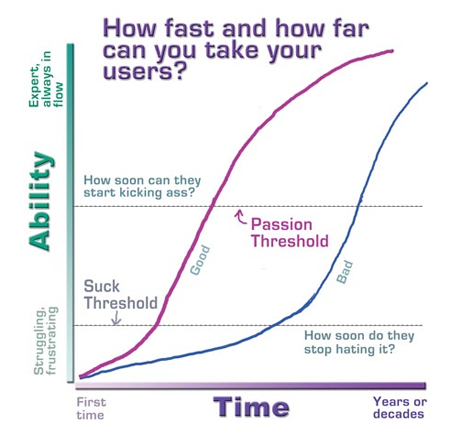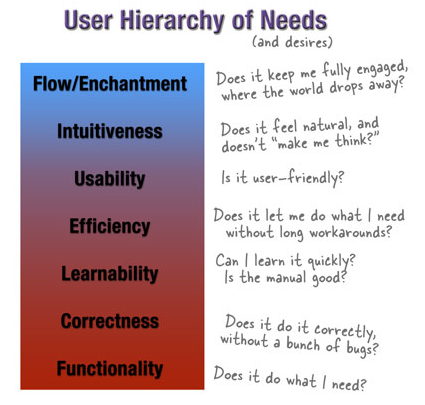Passion is the driving energy that powers people through problem solving, experimentation, and creative expression. Each learner has her own path and threshold to passion based on figuring out what matters deeply to her. Teachers benefit students by respecting the uniqueness and idiosyncrasies of the individual and by paying attention to the other cues that lead to deep involvement in an idea. In education, this is particularly important. Passionate people are more tolerant of failure, more willing to struggle while learning new skills, and take great pleasure in refining technique.
Design has two incarnations, the process and the object, and passion is evident in both. Design as a process is the never-ending iteration. Projects have to stop due to resource constraints and artificial deadlines, but the designer is always alternating between states of inquiry and conceptualization even after implementation is finished. A system can always be improved because the environment in which it is situated is constantly changing. New context brings new needs and motivations. It takes a deep enjoyment of that constant internal discourse to allow it to continue.

How ability and time related to passion, according to Creating Passionate Users
The relationship a person has with the artifact of design—manifesting as an interaction—also has the potential for passion. The chart above depicts the ratio between user activity and the time spent in the community. The key assumptions in this image are that (a) there is a specific critical threshold at which passion is achieved in a user, and (b) once achieved, there is not end to that state. As I have explored in previous posts (), however, that isn’t the typical dynamic. Time doesn’t simply aggregate all previous experience into some uber experience that keeps getting better and better. As skills increase, so do challenges and distractions, ways to knock a passionate user out of flow.
It might be a better analogy to equate passion with Newtonian mechanics and friction. Objects at rest stay at rest unless a force is applied. Stationary objects resting on a surface are more difficult to get started than to keep moving, due to the differences between static and kinetic friction. At some point, unless a driving force continues to be applied, the friction will slow a moving object into a resting state. For a user interacting with a system, the same kinds of dynamics are present—it takes some positive experiences to reach a state where passion is possible, and such a state is subject to decline as barriers increase or challenges disappear. It seems clear to me that there is also a prerequisite for more basic user needs, like functionality and accuracy, to first be met.

User needs begin with functionality and peak with a flow experience (from Creating Passionate Users)
Evolving barriers can be the death of passion. We can look no further than the creator of these charts for an example.
Creating Passionate Users is a great but dormant blog authored by Kathy Sierra and Dan Russell. Both are trained in artificial intelligence, although their paths have wandered away from AI. Sierra, who used to be a game developer for places like Virgin and MGM, is a creator of the Head First series of tech books and the founder of javaranch, a community for Java programmers. I credit her writing with introducing me to the unconference when she described the origins of her CPU blog. Sierra’s site proved to be a wealth of good diagrams, like the ones included in this post.
Sierra is the female blogger in a storm last March following a comment flame war that prompted a response from her (no longer available online) and a response to that response by Chris Locke. When the dust settled, Kathy stopped blogging and people like Tim O’Reilly were calling for civility badges. For Kathy, the passion for blogging ended when her perception of the context became threatening.
For more applications of Bev Bos’ conditions for growing wiser, see .